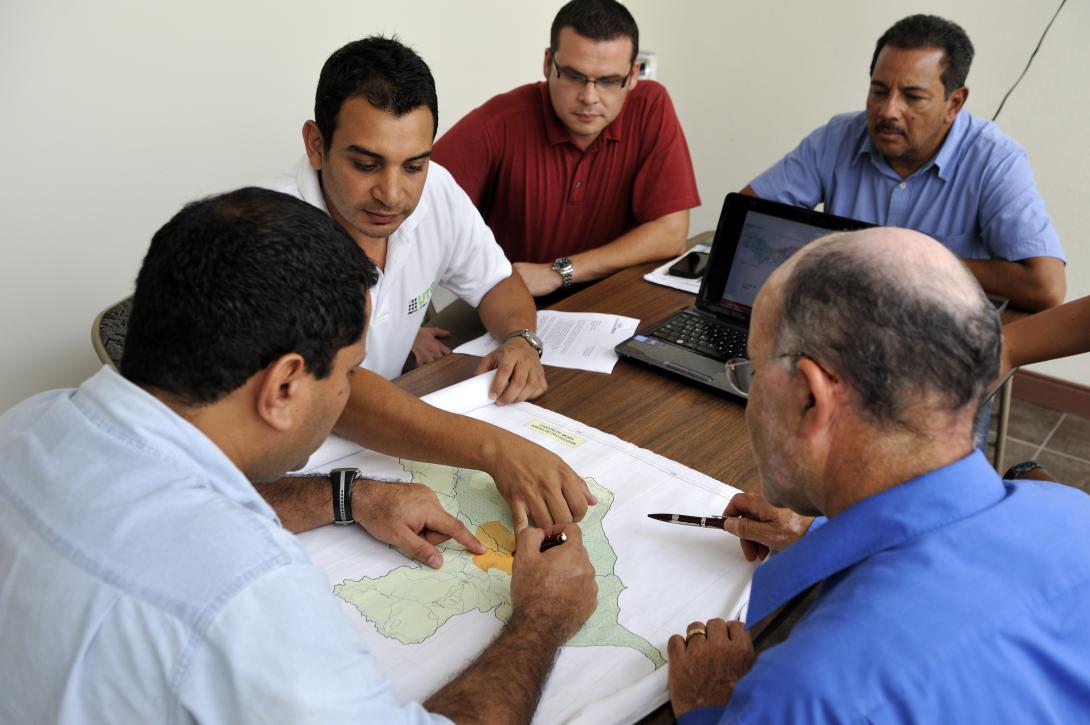Disaster Risk Management: Awareness and preparedness for emergencies at local level (APELL)

© GIZ
APELL is a process designed by UNEP to identify and create awareness of hazards and risks, to initiate measures for risk reduction, accident prevention and mitigation, and to develop coordinated preparedness among the local industry, authorities and population.
APELL is a coordinated planning process that has two parallel and complementary objectives:
- Creating a dialogue about hazards, risks, capabilities and plans involving all Stakeholders, leading to consensus on responsibilities and expectations for all community members;
- Allowing a community to increase its resilience (the ability to recover from incidents) and reduce its vulnerability (susceptibility to damaging effects of a hazard) by building local capacity for multi-stakeholder responses and enabling open dialogue, building mutual understanding, and leveraging the existing resources in an effective way.
Main features and components
APELL provides industrial estate managers with the information and decision-making structure they need to address any hazards in and around the estate, and to take effective remedial action.
Key aspects of the APELL process are:
- A senior estate official is designated to take the initiative on emergency preparedness and response.
- A Coordinating Group is created to discuss possible hazards and remedial actions. The Coordinating Group includes all key stakeholders who may experience an accident and/or those who could be affected.
- Consideration and adaptation by the Co-ordinating Group of the 10-step programme recommended in the APELL procedure. These steps are implemented by various organizations identified by the Group. Identification and mapping of potential hazards in the estate are also essential steps.
- Monitoring of risk reduction measures introduced and assessment of the increased safety that has resulted.
Implementation and work steps
Ten-step process:
Phase I: Engaging Stakeholders
1) Identify participants and establish their roles
Phase II: Understanding Hazards and Risks
2) Evaluate hazards and risks faced by the community
Phase III: Preparedness Planning
3) Review existing capabilities and plans – identify gaps
4) Create the Vision of Success
5) Make progress towards the Vision of Success
6) Make changes in existing emergency plans and integrate into overall community preparedness plan
Phase IV: Implementing, disseminating and testing
7) Obtain endorsement from government authorities
8) Implement plans through communicating, educating and training
9) Establish procedures for periodic testing, review and updating plans
Phase V: Maintaining APELL
10) Continuous Improvement: Elements are repeated in order to maintain, adapt and improve
Requirements
In most cases a concern about specific hazards and potential risks, or the actual occurrence of a natural disaster or industrial accident, forms the basis for the initial discussion of the APELL Process.
Output
Immediate benefits of an APELL programme are:
- efficient handling of any accident before it becomes too big (and expensive)
- good public relations with neighbouring communities and confidence in the estate management
- reassurance of potential investors: safety and health matters are well managed thus protecting the investors' image, business assets and employees
- a useful mechanism to discuss client companies' concerns (the APELL process can also be used to resolve other multi-stakeholder issues)
- an effective emergency service that can call on the resources and expertise of member companies and avoid costly duplication of equipment that is rarely used
- confidence-building with local authorities: safety and environmental problems are well managed, and safety compliance measures are in place
Two benefits of an APELL programme to estates:
- The estate becomes a safe and clean area with a low accident rate and no major disasters on the site.
- Industry and outside communities are confident because an effective system of emergency response exists to protect them, just in case.
Downloads
Characteristics
Phase of intervention
Introducing SIA, Sensitisation, Designing SIA, Master planning, Retrofitting, Operating SIA, Management, Climate change
Level of intervention
Company, Park management, Policy level (central), Policy level (decentral)
Target groups
Community representative, Company, SME, Industrial area management and operator, Local and international consultant and advisor, Municipality